Cultural and natural assets
Pakistan currently has the following UNESCO World Heritage Sites:
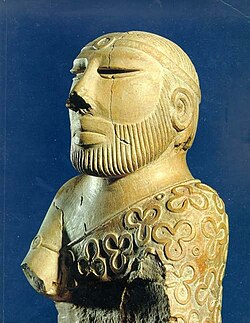 | Archaeological Ruins of Mohenjo-Daro |
| Good. cultural cultural registered in 1980.
|
| Location: Sind
|
This site houses the ruins of an immense city of the Indo Valley, built entirely in adobe in the third millennium BC. The acropolis erected on huge terraplenes, the walls and the rigorous planning of the layout of the lower city attest to the existence of a strictly planned early urbanism. (UNESCO/BPI)
|
 | Taxila |
| Good. cultural cultural registered in 1980.
|
| Location: Punjab
|
From the construction of the ancient neolithic tumulus of Saraikala to the building of the city of Sirsukh in the 1st century AD, through the erection of the walls of Sirkap in the 2nd century BC, the site of Taxila illustrates the urban development stages of a city of the valley of the Indo successively subject to the influence of Persia, Greece and Central Asia. From the 5th century BC to the 2nd century AD was also the seat of an important Buddhist teaching centre. (UNESCO/BPI)
|
 | Takht-i-Bahi Buddhist Ruins and Sahr-i-Bahlol Relics |
| Good. cultural cultural registered in 1980.
|
| Location: Northwest border
|
The Buddhist monastic group of Takht-i-Bahi (Trone of Origins) was founded in the early 1st century. His location at the top of a high hill saved him from the successive invasions of the region, which explains his good conservation status. In its vicinity are the ruins of Sahr-i-Bahlol, a small fortified city of the same time. (UNESCO/BPI)
|
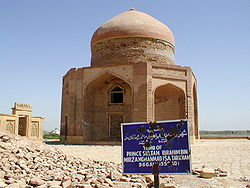 | Historical monuments in Makli, Thatta |
| Good. cultural cultural registered in 1981.
|
| Location: Sind
|
Capital of three successive dynasties, before falling under the domination of the Mogoles emperors of Delhi, the city of Thatta was continually embellished between the 14th and 18th centuries. The vestiges of this city and its necropolis are an exceptional testimony of the Sind civilization. (UNESCO/BPI)
|
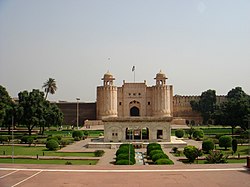 | Fort and Shalimar Gardens in Lahore |
| Good. cultural cultural registered in 1981.
|
| Location: Punjab
|
This site comprises two masterpieces of the apogee period of Mogol civilization, in times of Emperor Sha Jahan. The fortress of Lahore encloses in its walls a set of marble palaces and mosques adorned with mosaics and gilded. In the vicinity of the city, the splendid Shalamar Gardens, staggered on three terraces, offer an incomparable example of artistic refinement with its pavilions, waterfalls and vast ponds. (UNESCO/BPI)
|
 | Fort of Rohtas |
| Good. cultural cultural registered in 1997.
|
| Location: Punjab
|
After defeating the Mogol Emperor Humayun, in 1541, Sher Sha Suri ordered to build a set of fortifications in Rothas, a strategic place located in the north of the present territory of Pakistan. This strong, called Qila Rohtas, was never conquered and remained intact until today. The main fortification is a wall of more than four kilometers of perimeter with bastions and monumental doors. This fort is an exceptional example of the ancient Muslim military architecture in this region of Asia. (UNESCO/BPI)
|
 Archaeological Ruins of Mohenjo-Daro Takht-i-Bahi Buddhist Ruins and Sahr-i-Bahlol Relics Historical monuments in Makli, Thatta Fort and Shalimar Gardens in Lahore |
| Location of the World Heritage in Pakistan. |
Intangible cultural heritage
Pakistan currently has two items inscribed on the list of Intangible Cultural Heritage:
 | The Novruz or Nowrouz, Nooruz, Navruz, Nauroz and Nevruz (Feast of the New Year) |
| Good. immaterial registered in 2009, extended in 2016.
|
This element is shared with Afghanistan Afghanistan, Azerbaijan Afghanistan, Azerbaijan Azerbaijan, Azerbaijan,  India, Iran India, Iran Iran, Iraq Iran, Iraq Iraq, Kazakhstan Iraq, Kazakhstan Kazakhstan, Kyrgyzstan Kazakhstan, Kyrgyzstan Kyrgyzstan, Kyrgyzstan,  Tajikistan, Tajikistan,  Turkmenistan, Uzbekistan Turkmenistan, Uzbekistan Uzbekistan and Turkey Uzbekistan and Turkey Turkey Turkey |
The Feast of the New Year is often an ephemeris in which people express their desires for prosperity and a renewal of their lives. In many regions of Afghanistan, Azerbaijan, India, Iran, Iraq, Kazakhstan, Kyrgyzstan, Pakistan, Tajikistan, Turkmenistan, Turkey and Uzbekistan, this event is held on 21 March and is called Nauryz, Navruz, Nawruz, Nevruz, Novruz, Nowruz or Nuruz, which have the same meaning of “new day” in the different languages of those countries. Several celebrations of rites, ceremonies and cultural events take place for about two weeks. An important traditional custom of this period is to meet to eat with the family and close around a table ordained with objects that symbolize purity, luminosity, life and prosperity. The participants in the celebrations are adorned with new clothes and visit their neighbors and relatives, especially the elderly. Gifts are also made – especially for children – which often consist of objects made by artisans. In this festival of the New Year, street shows of music and dance are represented, water and fire are celebrated in public, traditional sports competitions are organized and various handicraft objects are produced. All these traditional customs, which older generations convey to the youngest through observation and participation in them, contribute to the promotion of cultural diversity and tolerance, and to the strengthening of the feeling of solidarity and peaceful relations in communities. (UNESCO/BPI)
|
 | The battery, a living human heritage |
| Good. immaterial registered in 2011 (enlarged in 2012 and 2016).
|
This element is shared with Germany Germany, Saudi Arabia Germany, Saudi Arabia Saudi Arabia Austria Saudi Arabia Austria Austria, Belgium Austria, Belgium Belgium, Qatar Belgium, Qatar Catar, South Korea Catar, South Korea South Korea, United Arab Emirates South Korea, United Arab Emirates United Arab Emirates, Spain United Arab Emirates, Spain Spain, Spain,  France, Hungary France, Hungary Hungary, Italy Hungary, Italy Italy, Kazakhstan Italy, Kazakhstan Kazakhstan, Morocco Kazakhstan, Morocco Morocco, Morocco,  Mongolia, Mongolia,  Portugal, Czech Republic Portugal, Czech Republic Czech Republic and Syria Czech Republic and Syria Syria Syria |
In the beginning, man used the art of battery to procure food, but his later evolution made that he is now primarily linked to the conservation of nature, the cultural heritage and the social activities of the communities. In accordance with their ethical traditions and principles, the cetreros doman, feed and train for the flight birds of prey—halconidos, as well as eagles and acipítridos—, creating a link with them and becoming their main protectors. Practiced in many countries around the world, the art of battery can present some practical variants – for example, on the equipment used – but its methods are always similar. Cetreros are considered a specific group. Sometimes they travel together for weeks, hunting and then telling each other the vicissitudes of each day in the evenings they organize. They consider that the battery binds them to the past, especially when they belong to communities in which this art represents one of its last links to the natural environment and its traditional culture. Practices and knowledge related to this element of immaterial cultural heritage are transmitted from generation to generation within families, as well as through formal mentoring and learning systems or training courses provided in clubs and schools. In some countries, a national review should be adopted to be a signer. The celebration of meetings and festivals allows the communities of cetreros to exchange knowledge, promote diversity and raise public awareness of the value of their art. (UNESCO/BPI)
|
See also Representative List of the Intangible Cultural Heritage of Humanity.
Indicative list
The registration in this list is the first stage for any future candidacy. Pakistan, whose tentative list was last revised on 12 January 2016, has submitted the following 26 sites:
 | Badshahi Mosque, Lahore Good. cultural cultural Proposed 1993
|
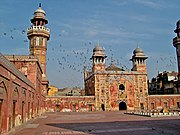 | Mosque of Wazir Khan, Lahore Good. cultural cultural Proposed 1993
|
 | Tombs of Jahangir, Asif Khan and Akbari Sarai, Lahore Good. cultural cultural Proposed 1993
|
 | Hiran Minar and pond, Sheikhupura Good. cultural cultural Proposed 1993
|
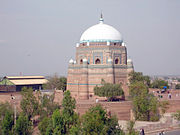 | Hazrat Rukn-e-Alam Tomb, Multan Good. cultural cultural Proposed 1993
|
 | Strong Rani Kot, Dadu Good. cultural cultural Proposed 1993
|
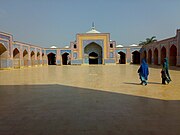 | Shah Jahan Mosque, Thatta Good. cultural cultural Proposed 1993
|
 | Chaukhandi tombs, Karachi Good. cultural cultural Proposed 1993
|
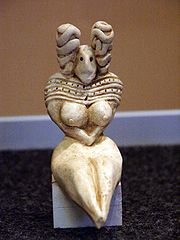 | Mehrgarh archaeological site Good. cultural culturalProposed 2004
|
 | Archaeological site of Rehman Dheri Good. cultural cultural Proposed 2004
|
 | Archaeological site of Harappa Good. cultural cultural Proposed 2004
|
 | Ranigat archaeological site Good. cultural cultural Proposed 2004
|
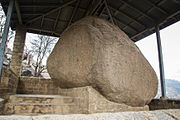 | Mansehra Stone Edicts Good. cultural cultural Proposed 2004
|
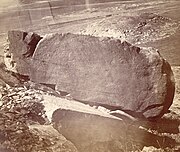 | Shahbazgarhi Stone Edicts Good. cultural cultural Proposed 2004
|
 | Fuerte Baltit Good. cultural cultural Proposed 2004
|
 | Tomb of Bibi Jawindi, Baha'al-Halim and Ustead and the tomb and mosque of Jalaluddin Bukhari Good. cultural cultural Proposed 2004
|
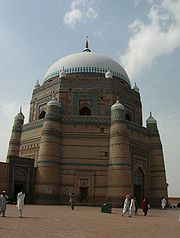 | Shah Rukn-e-Alam tomb Good. cultural cultural Proposed 2004
|
 | Puerto de Banbhore Good. cultural cultural Proposed 2004
|
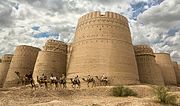 | Derawar and the forts of the Cholistan Desert Good. cultural cultural Proposed 2016
|
 | Cultural landscape of Hingol Good. cultural cultural Proposed 2016
|
 | Cultural landscape of the karez Good. cultural cultural Proposed 2016
|
 | Nagarparkar cultural landscape Good. cultural cultural Proposed 2016
|
 | Deosai National Park Good. natural Proposed 2016
|
 | Karakoram Central National Park Good. natural Proposed 2016
|
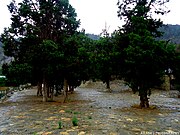 | Ziarat Enebros Forest Good. natural Proposed 2016
|
 | The Salt Range and the Khewra Salt Mine Good. mixto Proposed 2016
|
Previous World Heritage Nominees
The sites below were previously on the Tentative List, but have been withdrawn or rejected by UNESCO. Sites that are still included in other entries on the Tentative List or that have been accepted as World Heritage sites are not included here.
| Image
| Name
| Year
| Type
| Description
|
|---|
 | Petroglyphs of Hunza, Gilgit and Chilas
| 1980-1981 | K | |
 | Kirthar National Park
| 1982-1982 | N | |
 | Indo Dolphin Reserve
| 1982-1982 | N | |
 | Lal Suhanra National Park
| 1982-1982 | N | |
Más resultados...








































